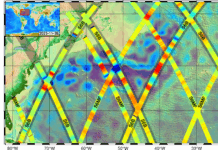In an exciting development for developers and businesses relying on event-driven architectures, DigitalOcean has announced the integration of Kafka Schema Registry into its Managed Kafka service. This advancement offers developers a robust mechanism to manage and validate data schemas in their applications. Kafka Schema Registry, sometimes known as Karapace, acts as a centralized hub for controlling and validating the structure of data in Kafka messages. This ensures that the data flowing through Kafka topics maintains a consistent format, thereby avoiding compatibility issues that could arise from mismatched data structures.
Enhancements for Developers
For software developers, the Kafka Schema Registry provides a strong framework for schema governance. It offers standardized HTTP access for Kafka services, which significantly enhances data integrity, boosts developer productivity, and promotes interoperability across systems. By centralizing the management and validation of schemas, DevOps teams can build more dependable and scalable event-driven applications. This centralization simplifies the process of integrating Kafka across various systems, thus heightening security and reliability.
The tool essentially brings order to Kafka topics by allowing developers to define, version, and validate message schemas. This ensures that data producers and consumers remain synchronized, even as data evolves. This capability minimizes the likelihood of disruptive changes, simplifies debugging processes, and ensures that Kafka pipelines remain robust and reliable at scale. However, it is important to note that Kafka Schema Registry is accessible only to Kafka customers using a dedicated CPU environment. For more information on optimizing your setup, you might want to explore DigitalOcean’s Droplets homepage or review their product documentation.
Key Features of Kafka Schema Registry
- Schema Registration & Validation: This feature enhances data consistency and reduces the risk of runtime errors caused by incompatible data formats. As a result, applications become more stable and reliable.
- Schema Evolution & Compatibility Control: By allowing producer and consumer applications to evolve independently, this feature facilitates agile development. It reduces the risks associated with deployment by ensuring that changes in one component do not disrupt others.
- Centralized Schema Storage: This creates a well-organized, accessible repository for all schemas, making it easier for developers to comprehend data structures. It also reduces the duplication of efforts across teams.
- REST Proxy for Kafka: This feature lowers the entry barrier for interacting with Kafka from a variety of platforms and applications, such as web interfaces, scripting languages, and legacy systems that cannot easily use native Kafka clients.
Practical Applications and Benefits
The integration of Kafka Schema Registry into DigitalOcean’s Managed Kafka service opens up several practical applications, each with its own set of benefits:
- Microservices Communication: By establishing a shared understanding of message formats, the registry helps prevent runtime errors between producer and consumer microservices. This shared understanding is crucial for maintaining seamless communication in microservices architectures.
- Data Contracts and Versioning: This feature allows for the safe evolution of data structures. Producer applications can update schemas without causing disruptions to downstream consumers that may rely on older schema versions.
- ETL and Analytics Pipelines: Ensuring that incoming data adheres to expected structures before entering the pipeline guarantees data quality and prevents job failures, which is critical in ETL (Extract, Transform, Load) processes and analytics.
- API Gateways: The registry helps deliver consistent and reliable data to external clients, eliminating guesswork and ensuring predictable, structured data payloads for every request.
- Machine Learning Workflows: By maintaining the structural integrity of both training and inference data, the registry supports model reproducibility and effective debugging, which are vital for successful machine learning projects.
Getting Started with Schema Registry
Developers can activate the Schema Registry feature either through the DigitalOcean Cloud Console or via API when setting up a Kafka cluster. This setup provides access to a dedicated Schema Registry endpoint, which integrates seamlessly with Kafka producer and consumer clients. For those looking to dive deeper into this new feature, DigitalOcean offers a wealth of resources and guides to help you get started.
In conclusion, the integration of Kafka Schema Registry into DigitalOcean’s Managed Kafka service represents a significant advancement for developers seeking to build robust and scalable event-driven applications. By providing a centralized platform for schema management and validation, this service not only enhances data integrity but also promotes smoother integration across diverse systems. As more organizations adopt event-driven architectures, tools like Kafka Schema Registry will become increasingly essential in ensuring the reliability and efficiency of their data pipelines.
For more Information, Refer to this article.


































